Vegan Cacio e Pepe
This post may contain affiliate links. Read our disclosure policy.
Vegan Cacio e Pepe, one of the most famous Roman pasta dishes alonside Carbonara, Arrabbiata and Amatriciana, made vegan, super delicious, good for you and fail proof.
Vegan Cacio e Pepe
Traditionally only a two ingredient pasta recipe not counting the spaghetti: Cacio which was always Pecorino Romano Cheese and Pepe which is the pepper. In a nutshell: it’s pasta with cheese and pepper or silky cheesy noodles = Good Stuff!
I make a good for you version that is both oil free and dairy free and unlike the fussy classic, this one is easy to nail and get right the first time around with spectacular success.
About the Peppercorns
As you probably already know, the black pepper here is an essential ingredient not just an afterthought. It’s important that it is freshly cracked on a medium coarse grind. It is then toasted in a dry skillet to bloom and release its floral peppery aroma. And this is what creates the depth of the peppery flavor throughout the dish. It’s simply not the same if you just crack some pepper on top, although you also want some of that in the end.
The Cheese Sauce
Nothing makes a better silkier cheesy sauce than magical cashews. No clumps, no fuss, just the most luscious emulsion. The secret ingredient that binds it all together is the starchy and salty pasta water. The umami flavor comes from a mix of savory condiments like nutritional yeast, white miso and just a touch of dijon mustard. Do not add any extra salt until after blending with the pasta water. Taste first and if you still feel you need to adjust the saltiness then this is the time to do so.
Best Pasta for Cacio e Pepe
You definitely want long noodles here, I used spaghettini but of course spaghetti, bucatini even fettuccine work great. Use a great quality bronze died pasta, IGP certified durum wheat is the best if available. The coarse texture of the noodles really help that sauce hang on to it tight.
As most things Italian each household has their own variation and favorite way of making things. Tonnarelli noodles are also commonly used and so are spaghetti alla chitarra. Short shaped Rigatoni is also common throughout Italy, so if you prefer a short pasta then rigatoni is a great vehicle to capture all that sauce in its ridges and grooves.
On Storage
This pasta is best served fresh out of the skillet with extra black pepper on top. It keeps well in the fridge for up to a week and is best reheated on the stove top helping it along with a little splash of water or veggie stock to loosen up the sauce and emulsify again. Freezing is not recommended.
Serving Suggestions
Although this makes a great quick weeknight meal, it can also be dressed up for the holiday table and served inside some type of roasted squash.
- Roasted Acorn or Spaghetti Squash
- Crispy Roasted Broccoli
- Oven Roasted Cherry Tomatoes
- Air Fryer Tofu
- Cauliflower Wings
- Tempeh Bacon Bits
- Vegan Ribs or Chicken
- Vegan Beyond Italian Sausage
- Fried Mushrooms
how to make vegan cacio e pepe
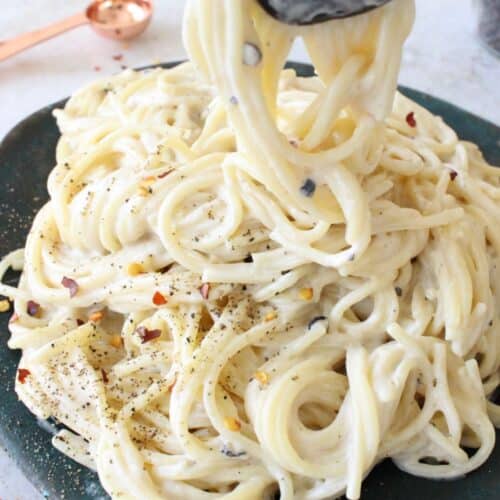
Vegan Cacio e Pepe
Ingredients
- 1 cup raw cashew pieces
- 1.5 Tbsp white miso paste
- 3 Tbsp nutritional yeast
- 1 Tbsp onion powder
- 3 garlic cloves grated
- 1 tsp dijon mustard
- 1/2 lemon juiced
- 3/4 cup reserved pasta water
- 1/2 Tbsp black pepper freshly cracked coarse grind + more to taste
- 1 lb spaghettini noodles
- Optional: vegan parmesan wedge for grating (Violife, Follow your Heart)
Instructions
- Soak the cashew pieces in hot boiling water for 20 minutes then drain. (If using a powerful blender such as a Vitamix you can skip the soaking process).1 cup raw cashew pieces
- Bring a medium large pot of water to a rolling boil. Season with salt generously, the water should taste like the sea. Boil the noodles until al dente, according to the instructions on the package. Reserve 2 cups of the pasta cooking water then drain.1 lb spaghettini noodles
The Sauce
- To a powerful blender add the soaked cashews, spices and 3/4 cups of the reserved pasta cooking water. Blend until silky smooth. Add a little bit more of the reserved water if needed.1 cup raw cashew pieces, 1.5 Tbsp white miso paste, 3 Tbsp nutritional yeast, 1 Tbsp onion powder, 3 garlic cloves, 1 tsp dijon mustard, 1/2 lemon, 3/4 cup reserved pasta water
- Preheat a large stainless steel or cast iron skillet over medium heat and add the freshly cracked pepper. Toss around until fragrant, we are just looking to bloom the spice, about 30 seconds.1/2 Tbsp black pepper
- Pour the sauce over the toasty black pepper and mix well until combined. Taste and adjust seasonings.
- Add 3/4 lb of the cooked spaghettini noodles and toss to coat well in the sauce. At this point if you are happy with the extra sauce coverage you can serve as it. Otherwise add all the remaining noodles, a little more reserved pasta water until the desired emulsion and sauce coverage is achieved.
- Serve with extra freshly cracked black pepper and a grating of vegan parmesan cheese on top.Optional: vegan parmesan wedge for grating
WFPB + Plantricous
- The cashew cheese sauce is oil free and WFPB compliant, for full compliance make sure to choose a whole grain pasta to toss with.
Notes
- The Cheese Sauce - Do not add any extra salt until after blending with the pasta water. Taste first and if you still feel you need to adjust the saltiness then this is the time to do so. The pasta water is already salty so it's important to not over salt.
- About the Peppercorns - It’s important that it is freshly cracked on a medium coarse grind. It is then toasted in a dry skillet to bloom and release its floral peppery aroma, this is what creates the deep peppery layer of flavor.


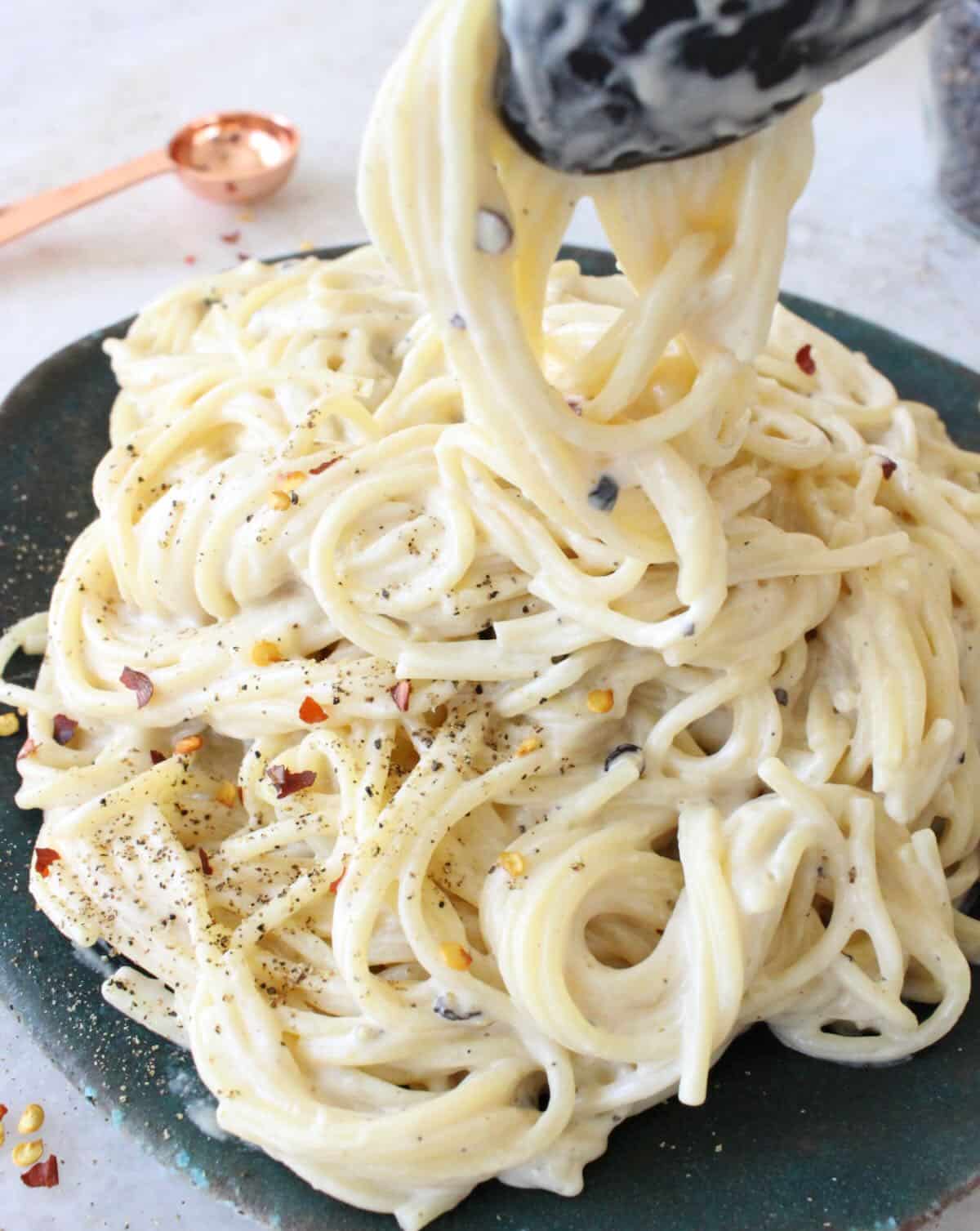
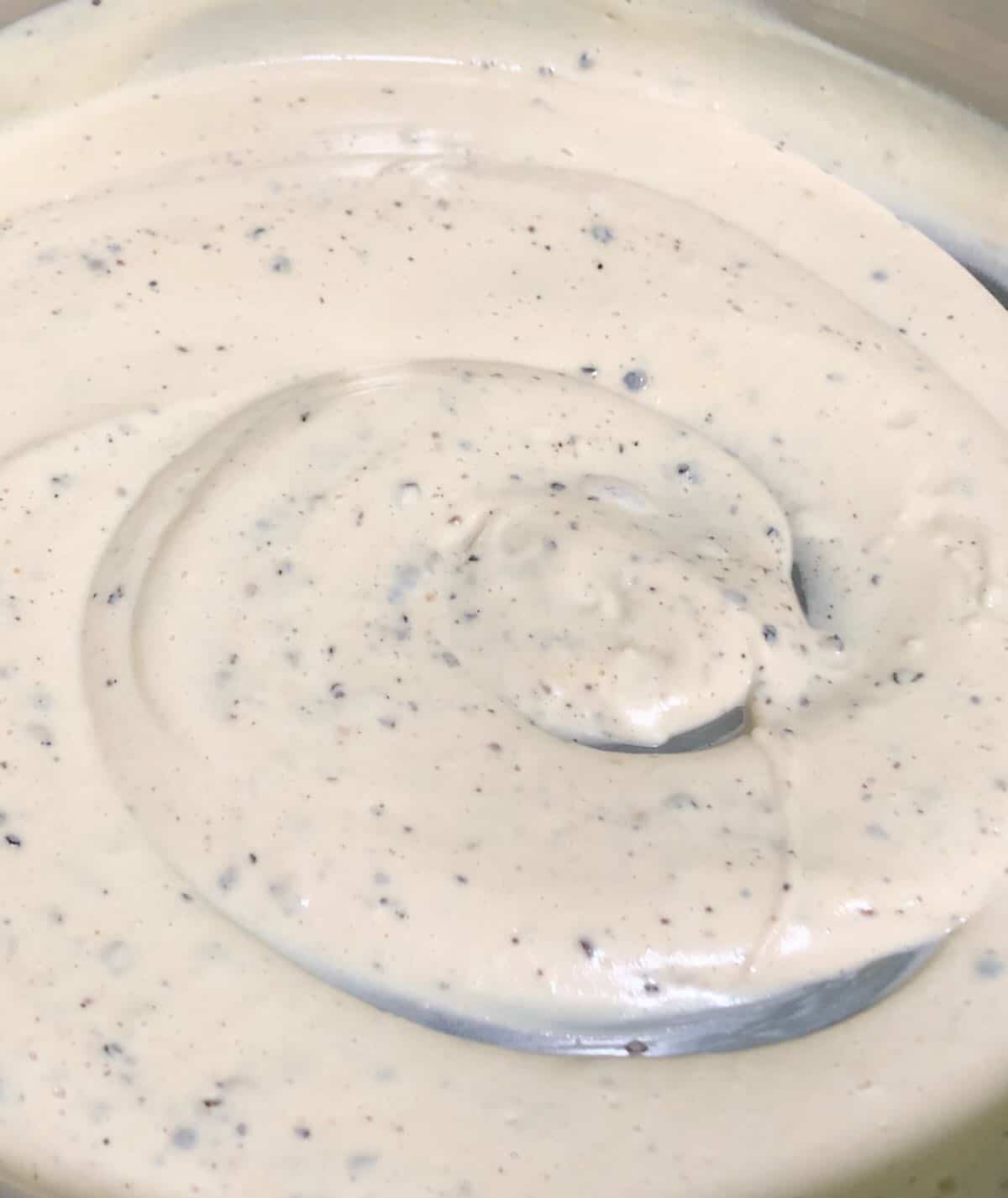

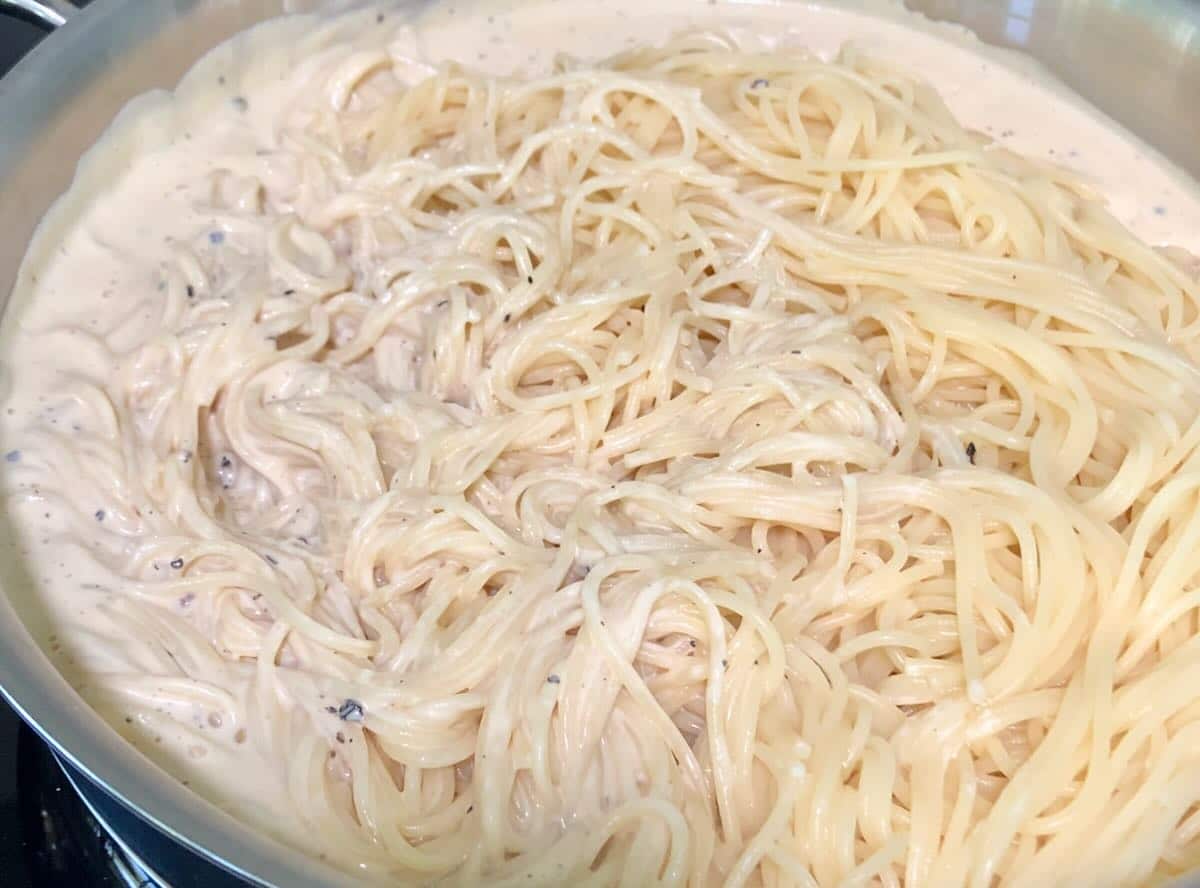
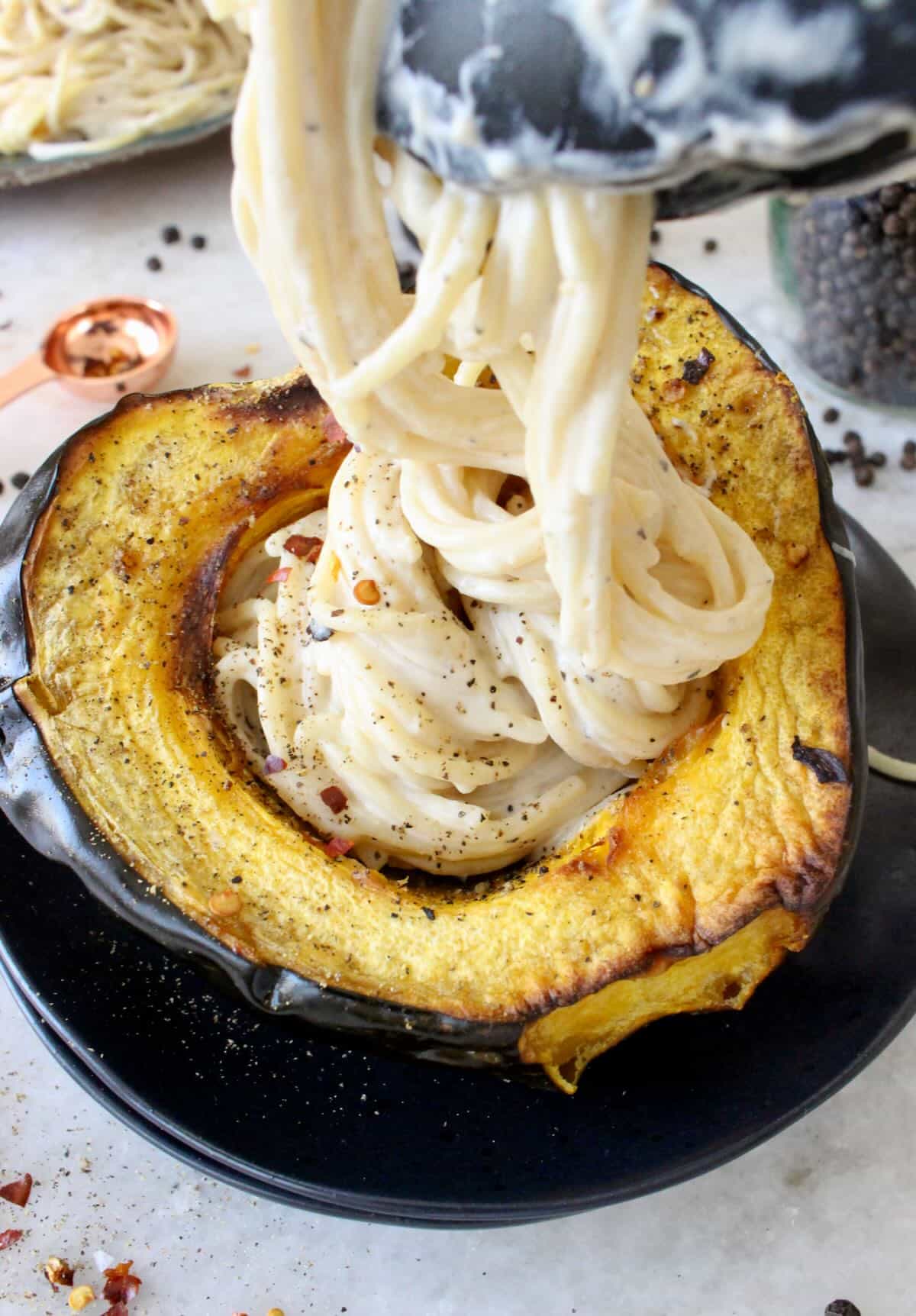
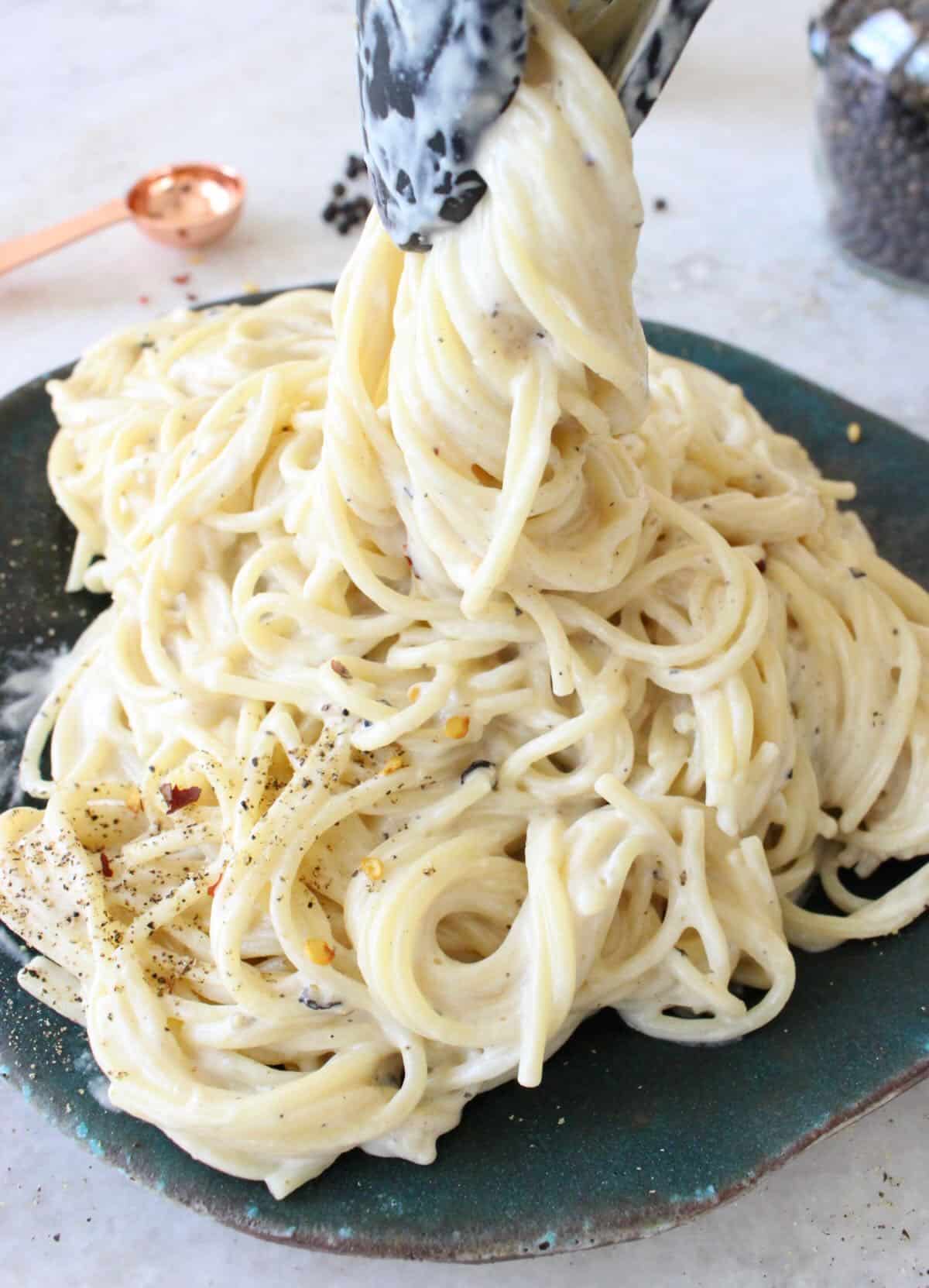
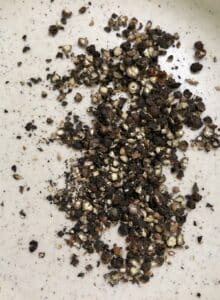
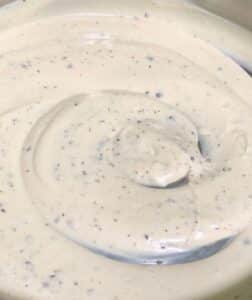
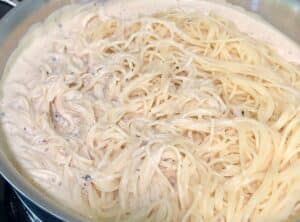

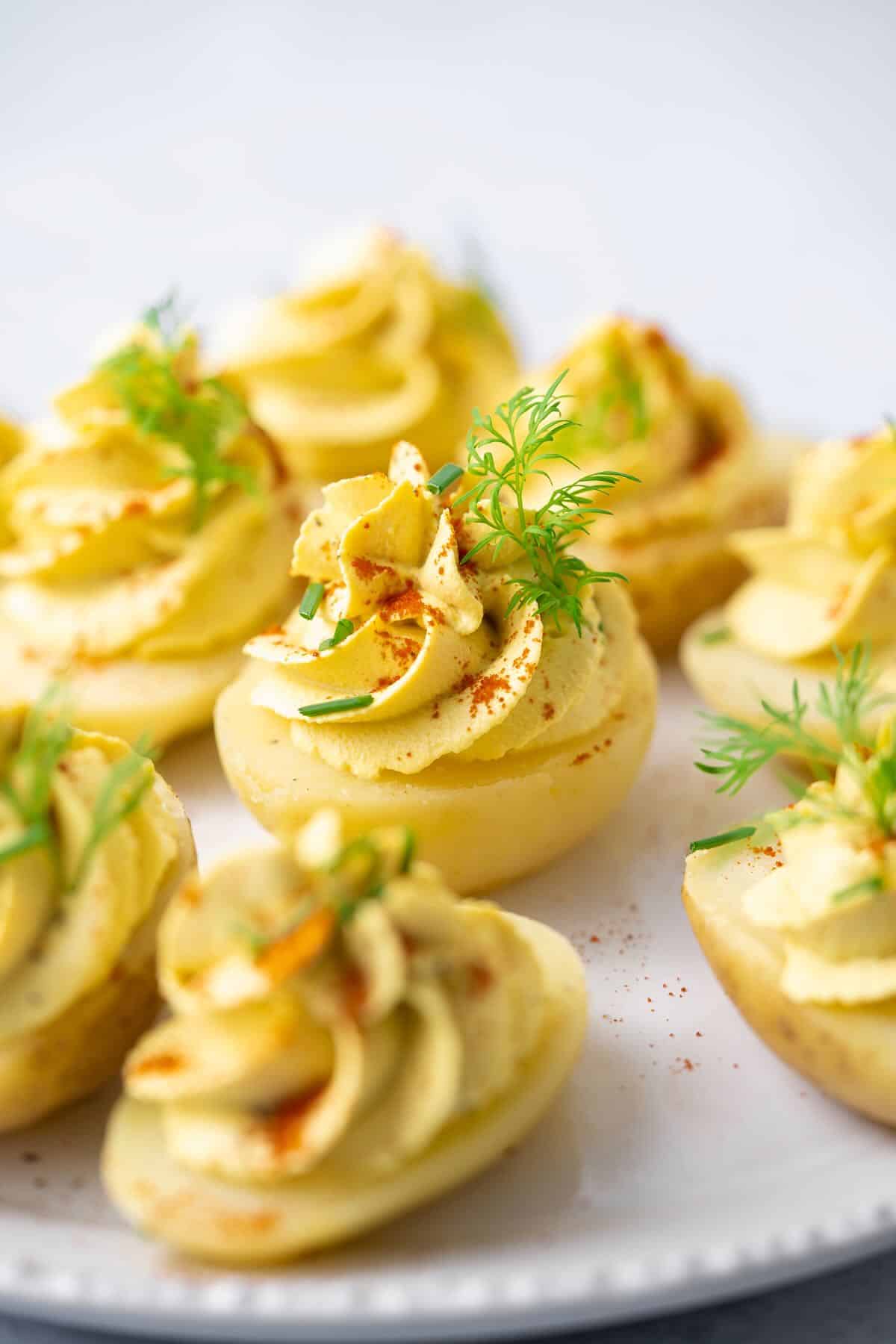
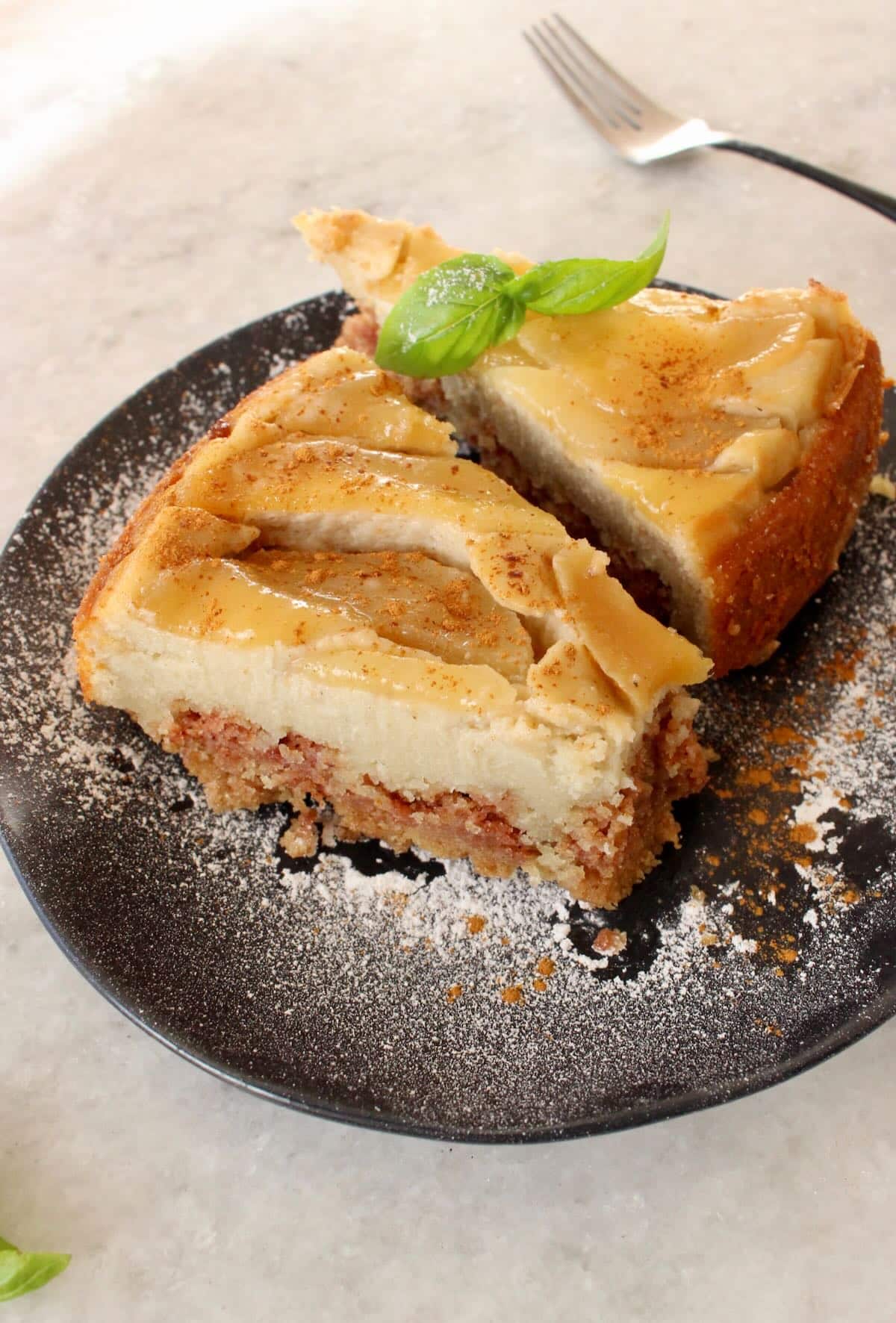
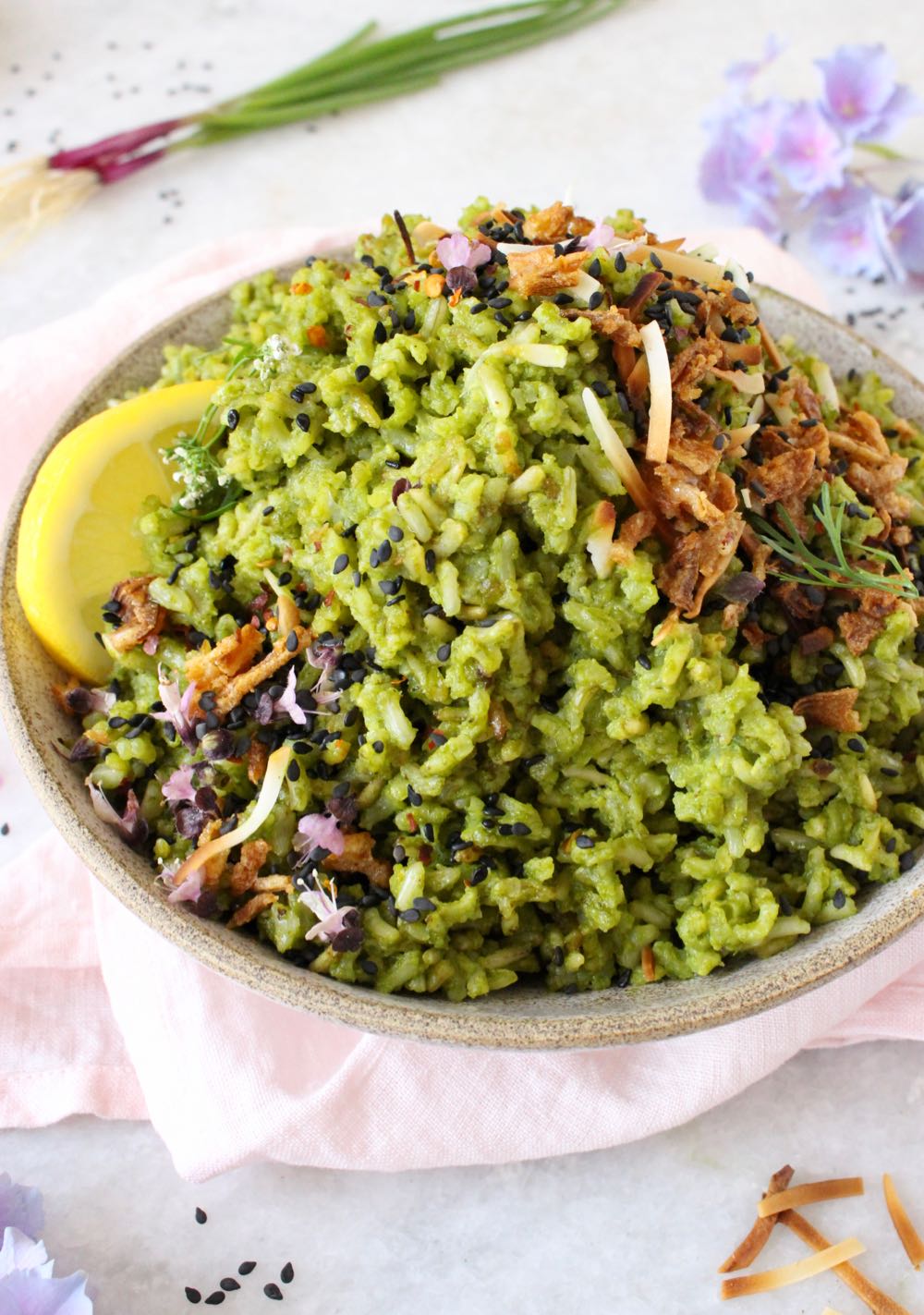
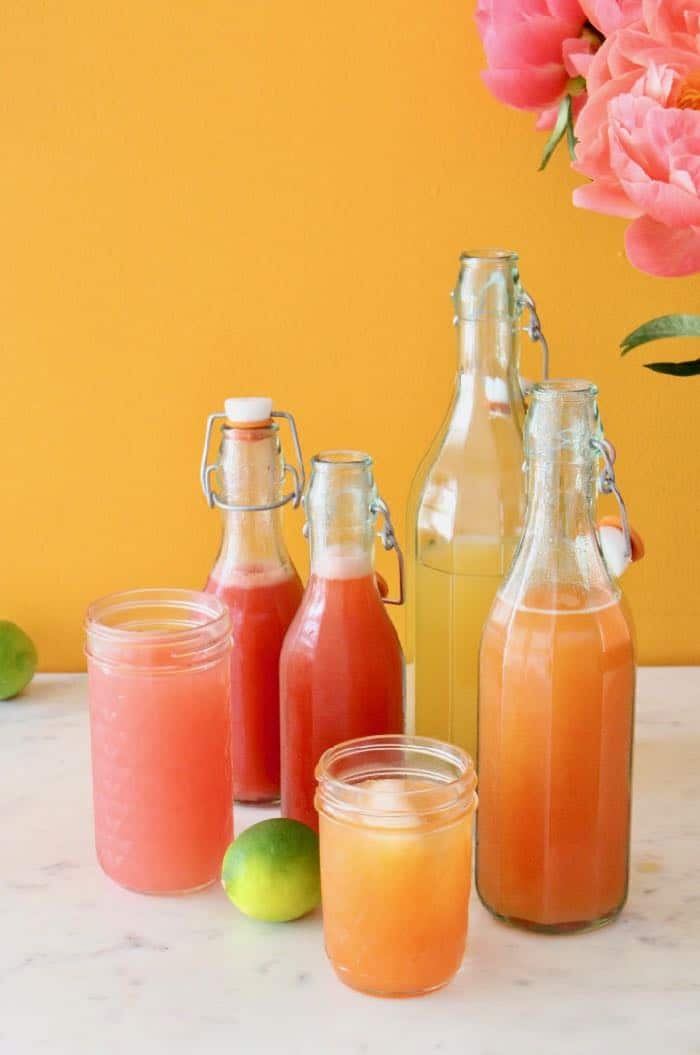
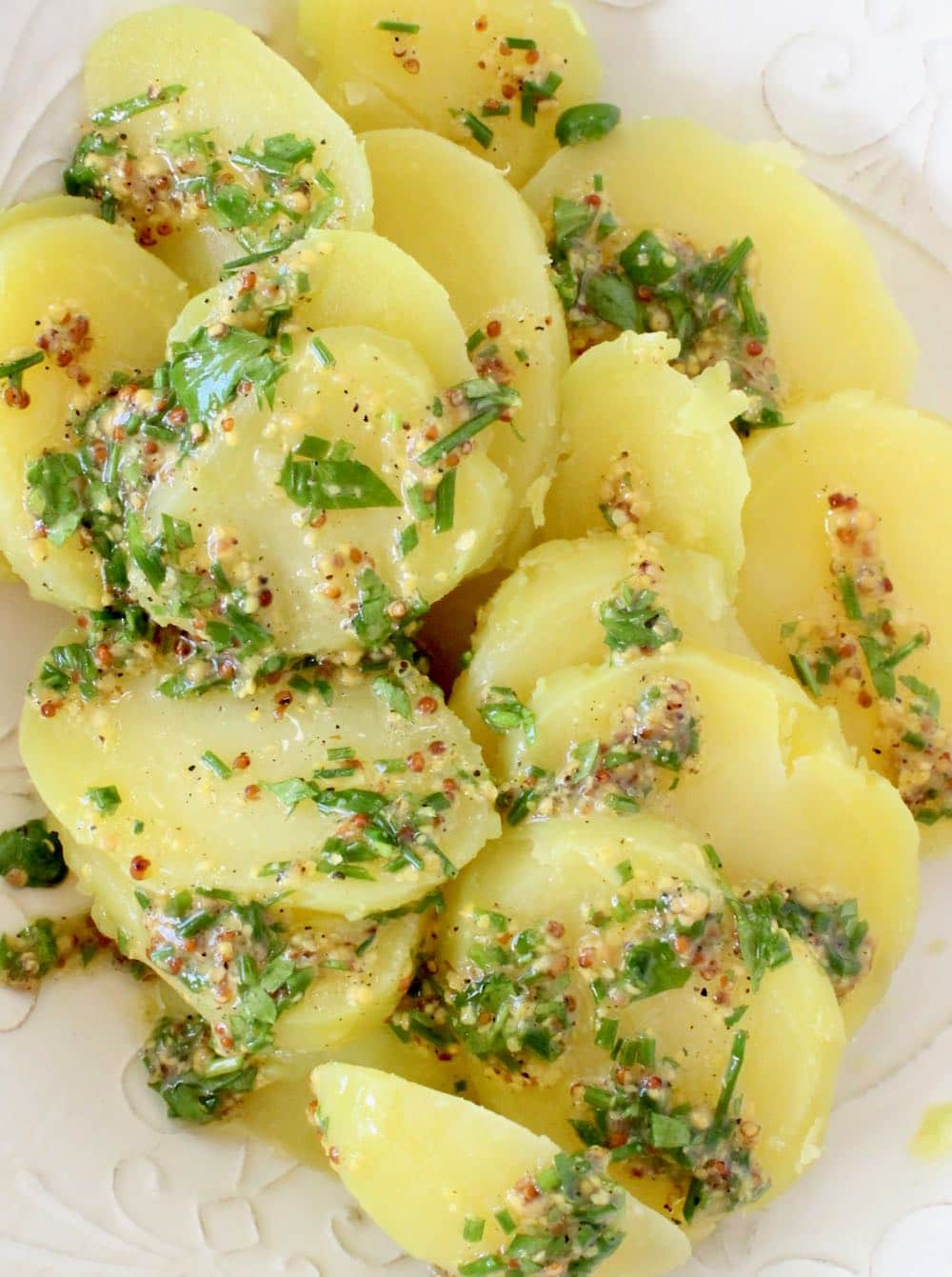
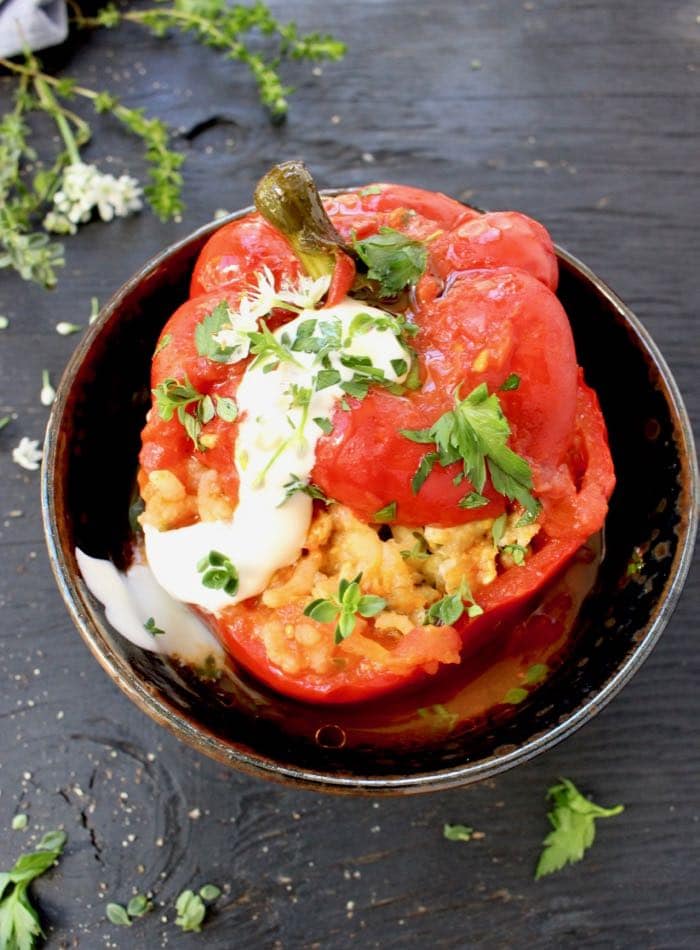
I expected this to be an ok sauce but WOW I’m liking it better than the dairy version, it’s absolutely perfect and incredibly delicious hitting all the deep savory notes that are expected from this simple sauce. Can’t wait to try your vegan chicken next! Five starts from me!